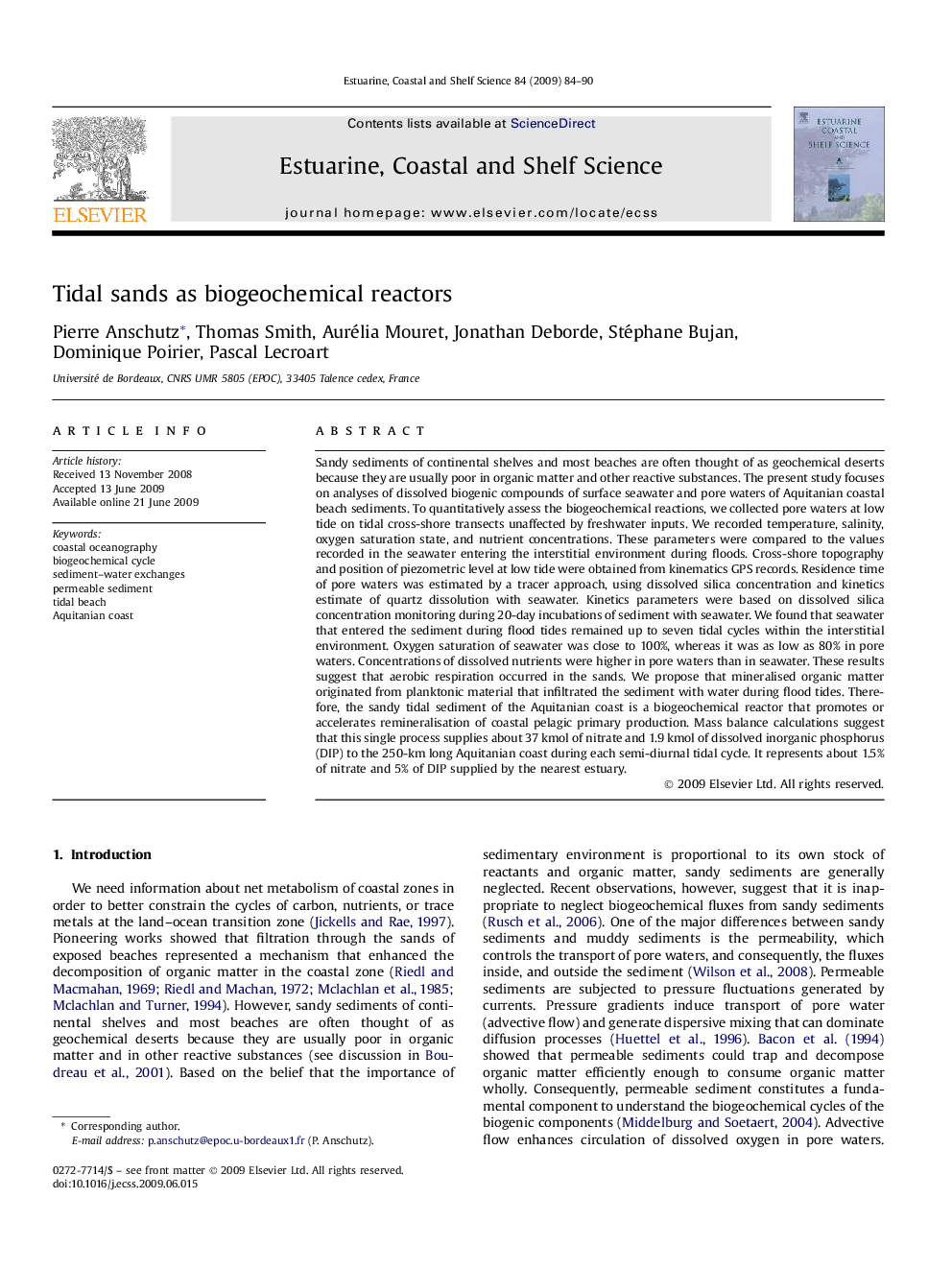| کد مقاله | کد نشریه | سال انتشار | مقاله انگلیسی | نسخه تمام متن |
|---|---|---|---|---|
| 4541157 | 1326710 | 2009 | 7 صفحه PDF | دانلود رایگان |

Sandy sediments of continental shelves and most beaches are often thought of as geochemical deserts because they are usually poor in organic matter and other reactive substances. The present study focuses on analyses of dissolved biogenic compounds of surface seawater and pore waters of Aquitanian coastal beach sediments. To quantitatively assess the biogeochemical reactions, we collected pore waters at low tide on tidal cross-shore transects unaffected by freshwater inputs. We recorded temperature, salinity, oxygen saturation state, and nutrient concentrations. These parameters were compared to the values recorded in the seawater entering the interstitial environment during floods. Cross-shore topography and position of piezometric level at low tide were obtained from kinematics GPS records. Residence time of pore waters was estimated by a tracer approach, using dissolved silica concentration and kinetics estimate of quartz dissolution with seawater. Kinetics parameters were based on dissolved silica concentration monitoring during 20-day incubations of sediment with seawater. We found that seawater that entered the sediment during flood tides remained up to seven tidal cycles within the interstitial environment. Oxygen saturation of seawater was close to 100%, whereas it was as low as 80% in pore waters. Concentrations of dissolved nutrients were higher in pore waters than in seawater. These results suggest that aerobic respiration occurred in the sands. We propose that mineralised organic matter originated from planktonic material that infiltrated the sediment with water during flood tides. Therefore, the sandy tidal sediment of the Aquitanian coast is a biogeochemical reactor that promotes or accelerates remineralisation of coastal pelagic primary production. Mass balance calculations suggest that this single process supplies about 37 kmol of nitrate and 1.9 kmol of dissolved inorganic phosphorus (DIP) to the 250-km long Aquitanian coast during each semi-diurnal tidal cycle. It represents about 1.5% of nitrate and 5% of DIP supplied by the nearest estuary.
Journal: Estuarine, Coastal and Shelf Science - Volume 84, Issue 1, 20 August 2009, Pages 84–90